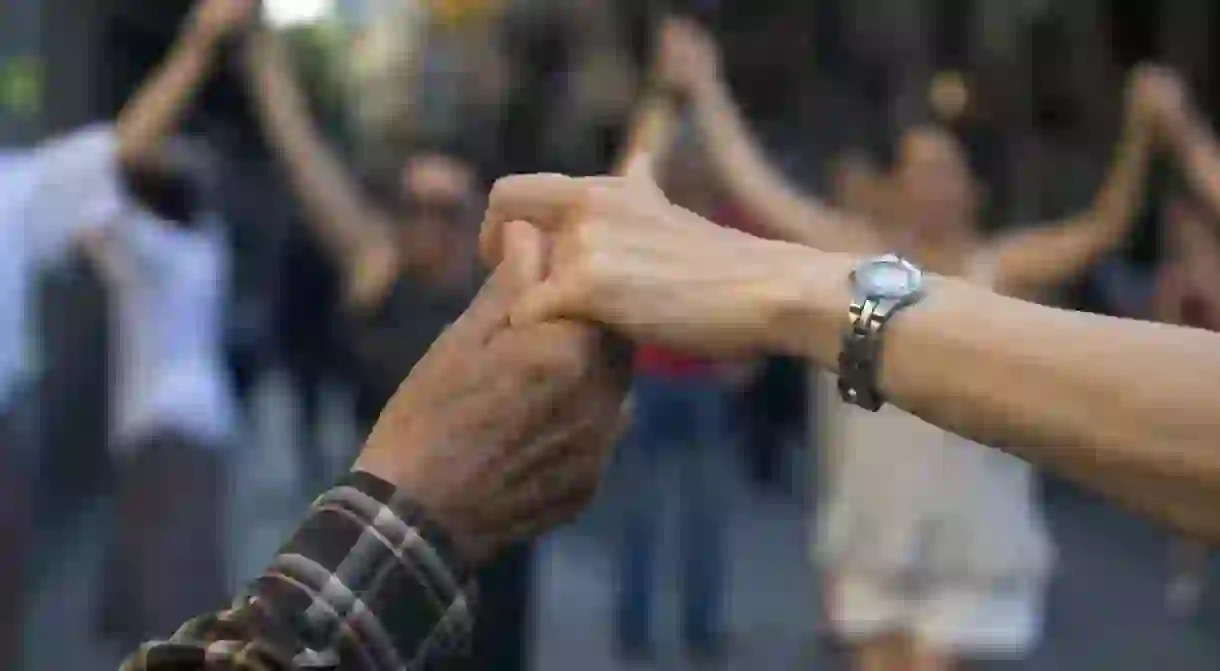What to Know About Catalonia's Sardana Dancing

Whether it’s a small festivity in a village of the Pyrenees, or a city-wide celebration in Barcelona, nearly any popular gathering in Catalonia will feature a traditional Sardana dance. With alleged roots in Ancient Greece and a long history of weaving in and out of popularity, today the Sardana is an important part of Catalan culture.
The History of the Sardana
The Sardana is performed by a mixture of men and women who hold hands in a circle before making choreographed moves. This is perhaps one of the most ancient forms of dance to be found in history and dances with a similar structure can be found in ancient civilisations of Europe, Africa and Asia.
The Catalan Sardana is often said to be an evolution of a type of popular dance performed in Ancient Greece at the occasion of public celebrations. The evolution of the dance from then onwards is unclear, with some claiming that the Sardana has been performed in some version in Catalonia since the 16th century, but there are very few records of this and the precise structure of the dance is unclear.

The turning point for the Sardana came in the 19th century when Catalan composer and musician Pep Ventura established the basis of what is the modern-day Sardana. As a result of his work, the structure of the band which accompanies the dance was modified to include new instruments (mainly wind instruments) and the duration of the dance was extended.
This effort to define the dance coincided with the new movement of Catalan national identity known as the Renaixença. This Romantic revival of the Catalan language and culture spread across art, theatre, dance, music and literature.
Throughout the 19th century, the style and structure of the Sardana were set in stone and unified across the various regions of Catalonia as the dance grew in popularity. While today these norms are followed throughout the province, there are still some local variations which have survived throughout the centuries.

The Dance structure
The Sardana is a relatively easy dance to perform in terms of physical strength – making it accessible to people of all ages and abilities – yet the rules governing the choreography are relatively sophisticated.
The basis for the dance is the division into two sections which are known as tirades in Catalan and which can be either short (curts) or long (llargs). The curts are performed with arms down by the side while the llargs are performed with arms at shoulder length.
While the size of the circle can vary, it is conventional to alternate men and women with partners typically dancing side by side and the woman usually to the man’s right. When joining the circle it is customary to not interrupt this pattern or the partnerships.
The music
A Sardana requires not just the right dance movements but also a specific type of musical accompaniment. The music is performed by a type of band called a cobla which consists of 11 band members playing some 12 instruments. Five of these instruments are wind instruments, with the addition of a double bass and a small drum known as tamboril.
The interplay of curts and llargs can be varied to give the dance its own structure, but there are certain elements which must feature in any Sardana to make it complete. Namely, the song must begin with an introit – a short musical introduction which announces the beginning of the dance and signals the dances or sardinistas to take their places. The dance must also finish with a cop final or ‘final beat’ which is performed after the repetition of the last llargs.














